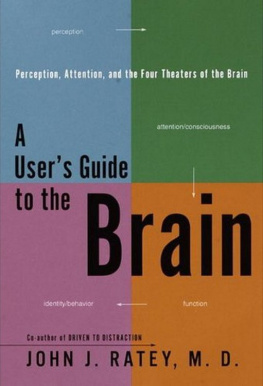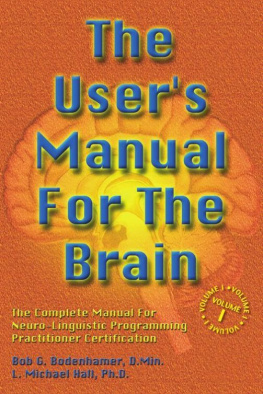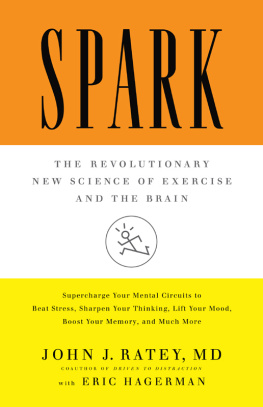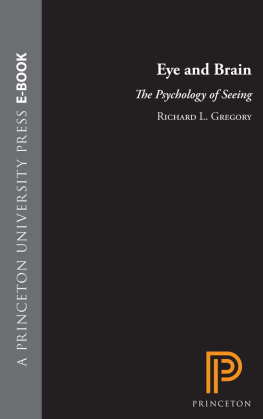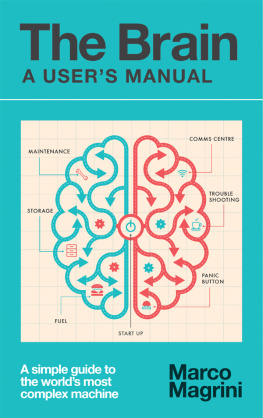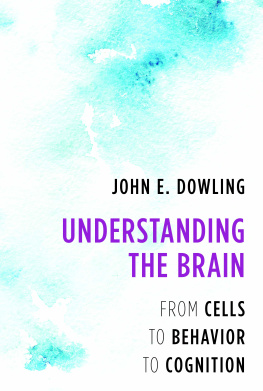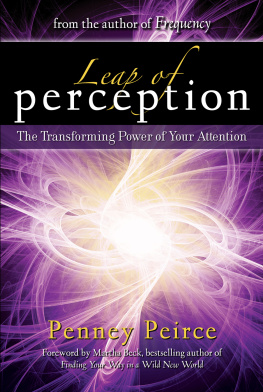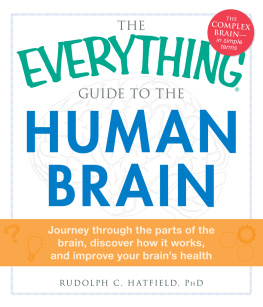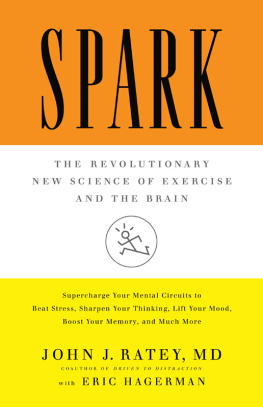John Ratey - A Users Guide to the Brain: Perception, Attention, and the Four Theaters of the Brain
Here you can read online John Ratey - A Users Guide to the Brain: Perception, Attention, and the Four Theaters of the Brain full text of the book (entire story) in english for free. Download pdf and epub, get meaning, cover and reviews about this ebook. year: 2002, publisher: Alfred A. Knopf, genre: Romance novel. Description of the work, (preface) as well as reviews are available. Best literature library LitArk.com created for fans of good reading and offers a wide selection of genres:
Romance novel
Science fiction
Adventure
Detective
Science
History
Home and family
Prose
Art
Politics
Computer
Non-fiction
Religion
Business
Children
Humor
Choose a favorite category and find really read worthwhile books. Enjoy immersion in the world of imagination, feel the emotions of the characters or learn something new for yourself, make an fascinating discovery.
- Book:A Users Guide to the Brain: Perception, Attention, and the Four Theaters of the Brain
- Author:
- Publisher:Alfred A. Knopf
- Genre:
- Year:2002
- Rating:3 / 5
- Favourites:Add to favourites
- Your mark:
- 60
- 1
- 2
- 3
- 4
- 5
A Users Guide to the Brain: Perception, Attention, and the Four Theaters of the Brain: summary, description and annotation
We offer to read an annotation, description, summary or preface (depends on what the author of the book "A Users Guide to the Brain: Perception, Attention, and the Four Theaters of the Brain" wrote himself). If you haven't found the necessary information about the book — write in the comments, we will try to find it.
John Ratey: author's other books
Who wrote A Users Guide to the Brain: Perception, Attention, and the Four Theaters of the Brain? Find out the surname, the name of the author of the book and a list of all author's works by series.
A Users Guide to the Brain: Perception, Attention, and the Four Theaters of the Brain — read online for free the complete book (whole text) full work
Below is the text of the book, divided by pages. System saving the place of the last page read, allows you to conveniently read the book "A Users Guide to the Brain: Perception, Attention, and the Four Theaters of the Brain" online for free, without having to search again every time where you left off. Put a bookmark, and you can go to the page where you finished reading at any time.
Font size:
Interval:
Bookmark:
ALSO BY JOHN J. RATEY, M.D.
Mental Retardation: Developing Pharmacotherapies
The Neuropsychiatry of Personality Disorders
Driven to Distraction (with Edward M. Hallowell, M.D.)
Answers to Distraction (with Edward M. Hallowell, M.D.)
Shadow Syndromes (with Catherine Johnson, Ph.D.)
Copyright 2001 by John J. Ratey, M.D.
All rights reserved under International and Pan-American Copyright
Conventions. Published in the United States by Pantheon Books,
a division of Random House, Inc., New York, and simultaneously in
Canada by Random House of Canada Limited, Toronto.
Pantheon Books and colophon are registered trademarks of Random House, Inc.
Grateful acknowledgment is made to Allyn & Bacon for permission to reprint
figures 8.8 and 8.9 from Physiology of Behavior, 5th edition, by Neil R. Carlson.
Copyright 1994 by Allyn & Bacon. Reprinted by permission of Allyn & Bacon.
Library of Congress Cataloging-in-Publication Data
Ratey, John J., 1948
A users guide to the brain: perception, attention, and the
four theaters of the brain / John J. Ratey.
p. cm.
Includes bibliographical references and index.
eISBN 0-375-42179-3
v1.0
1. NeuropsychologyPopular works. 2. BrainPopular works.
3. NeurochemistryPopular works. I. Title.
QP360.R37 2000
612.82dc21 98-27796 REV
www.pantheonbooks.com
Book design by Jo Anne Metsch
Illustrations by Hilda R. Muinos
FOR TEMPLE GRANDIN AND MY WIFE, NANCY.
TWO BRAINS WHO HAVE TAUGHT ME MUCH.
FOR THE FIRST TIME EVER , discoveries in the neurosciences are beginning to overlap with fields as different as anthropology, philosophy, linguistics, and psychology. The media seem obsessed with one particular aspect of these discoveries, namely, that there is a biological basis for our personalities, behaviors, and mental disorders. This is exciting stuff, of course, but it misses the real thrill of what we are beginning to uncover.
Along with better drugs, our new discoveries are beginning to generate speculative theories about how the brain itself works. If several of these theories are even remotely close to the truth, they will change the way we think about ourselves forever. An observer of the developing scene must feel as Balboa must have when he first saw the Pacific Ocean: we dont yet know the full meaning of what we are seeing in the neurosciences, but we do know it means the beginning of a new age. To see yourself through the eyes of the modern neuroscientist, it turns out, not only provides a means of self-understanding that is new and inspiring but also points to a unification, rather than a contradiction, of what psychologists, anthropologists, linguists, and philosophers have been saying all along. Suddenly, for us, the world has gone from flat to round! Because the brain is ultimately responsible for personality, culture, language, and reason, this emerging unity is hardly surprising, but it is breathtakingly new, for only recently has research allowed us to speculate on how the brain actually works.
How, then, are we to set about translating such a complex topic into a useful primer for everyone? At first glance, the neuroscientific mapping of the brain is a confusing hodgepodge of different classification systems. Because individual brains vary so significantly, even professional neurogeographers often disagree as to where the lines should be drawn, and function is an entirely different matter. Imagine trying to read a road map of Pennsylvania that had, in tiny print, all of the combined data from voting belts, income concentrations, population density, ethnic composition, and geologic surveys, and all of it recording historical changes over the last century. It would be so much easier, you sigh, to call the tourist office and get specific directions, but then you would miss out on the rich culture the state has to offer. Brain science is its own priestly sect, a mystical order quite closed off to the uninitiated. I will be working my hardest throughout this book to give to you, the reader, a chance to learn about the brains complexity without jargon. I hope you begin to get excited as you realize that what we now confront in the neurosciences is more enthralling than the computer or cyberspace in all its glory. Discoveries in the next thirty years will transform not merely our world but our very selves. How and when these changes in our world will occur is, of course, unpredictable, but we all need to be ready and very much a part of what is coming.
The confusing terminology that neuroscience applies to the brain and its functions will itself eventually need to changeand it will as our understanding of the brain deepens. Scientists looking at pathology are still caught up in the unitary hunt for the broken neural component they imagine to be at fault, and are doing their best to match up specific brain functions with specific neurogeographical locations. The sooner we replace our mechanistic model of the brain with an ecologically centered, systems-based view, the better off we will be, for such a model better accounts for much of human experience. But changing the terminology is not the purpose of the book; that really is work for neuroscientists, and work they must, for their own prejudices and categories are a big barrier to progress in the field. Terms like memory or happiness or plausibility are not brain functions, they are semantic categories generated by brain functions for which we have no names and of which, as yet, we have a poor understanding. Fortunately, most scientists in the field are aware of how urgent it is that we revise our models of how the brain works and find a corresponding new language to express those ideas. In these pages I will have to translate the jargon into some better form, and so I will, in a sense, be finding a new way to talk about the brain.
Much of the language used in discussing the brain, particularly in the cognitive sciences, comes from computation, and it is inconsistent with what we know about the brain. The brain is nothing like the personal computers it has designed, for it does not process information and construct images by manipulating strings of digits such as ones and zeros. Instead, the brain is largely composed of maps, arrays of neurons that apparently represent entire objects of perception or cognition, or at least entire sensory or cognitive qualities of those objects, such as color, texture, credibility, or speed. Most cognitive functions involve the interaction of maps from many different part of the brain at once; it is the bane of cognitive scientists that bananas are not located in a single structure of the brain. The brain assembles perceptions by the simultaneous interaction of whole concepts, whole images. Rather than using the predicative logic of a microchip, the brain is an analog processor, meaning, essentially, that it works by analogy and metaphor. It relates whole concepts to one another and looks for similarities, differences, or relationships between them. It does not assemble thoughts and feelings from bits of data.
Consequently, I have decided that I will have to replace much of the technical language about the brain with a language more akin to what the brain itself uses. Throughout this book I will be making constant use of metaphors and analogies, as well as anecdotes from my life and from those of patients. I do not include a glossary on purpose, as I try to use clarity and repetition to solidify in the readers memory the names, functions, and approximate locations of the many suborgans or parts of the brain. Although metaphor and analogy are unconventional in scientific circles, I am firmly convinced that a more nonlinear kind of thought will eventually supplant much of the logical reasoning we use today. Chris Langton, one of the primary researchers in the field of complexity theory, has speculated that in the future science will become more poetic. Our troubled world, too, is becoming too complex for logical argumentation, and may have to change its thinking: real trust, when emotions are running high, is based on analogy, not calculation. Meanwhile, we must concentrate our attention on learning all we can about the brain, as a way to get the jump on where the field, and our world, are headed.
Font size:
Interval:
Bookmark:
Similar books «A Users Guide to the Brain: Perception, Attention, and the Four Theaters of the Brain»
Look at similar books to A Users Guide to the Brain: Perception, Attention, and the Four Theaters of the Brain. We have selected literature similar in name and meaning in the hope of providing readers with more options to find new, interesting, not yet read works.
Discussion, reviews of the book A Users Guide to the Brain: Perception, Attention, and the Four Theaters of the Brain and just readers' own opinions. Leave your comments, write what you think about the work, its meaning or the main characters. Specify what exactly you liked and what you didn't like, and why you think so.

